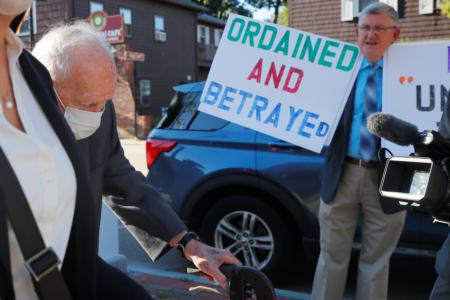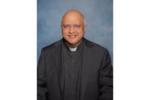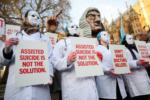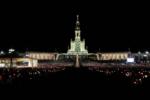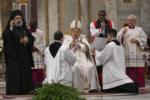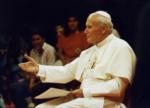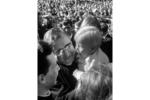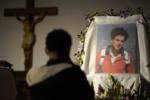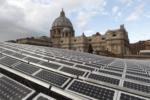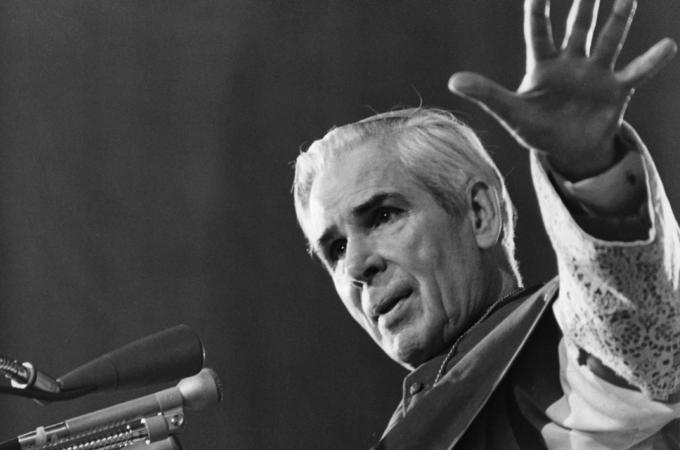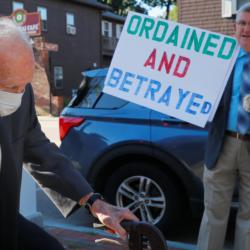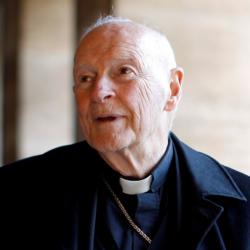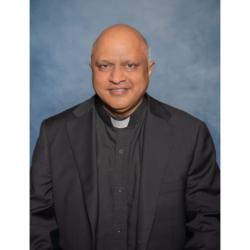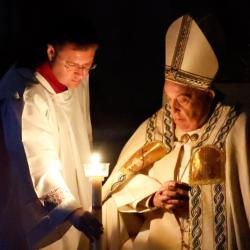Archbishop Fulton J. Sheen's body
Q. I have been following the legal wrangling over where the body of Archbishop Fulton J. Sheen should rest: New York, where he is buried now, or Peoria, Illinois, where he was born. I am appalled that diocesan leaders would do battle over something like this.
Sheen belongs to God and the church -- not to whoever has his bodily remains. I feel that the arguing should cease, so that the canonization process can get moving. Am I missing something? (Yorktown, Virginia)
A. Fulton Sheen was born in 1895 in the village of El Paso, Illinois, which is part of the Catholic diocese of Peoria. But he spent most of his priestly life in Washington, D.C., where he taught philosophy and theology at The Catholic University of America, and in New York City, where he served as an auxiliary bishop for 15 years and where, from 1951 until 1957, he hosted the television program "Life is Worth Living," which drew some 30 million viewers every week.
When Archbishop Sheen died in 1979, he was buried in New York City in accordance with his family's preference and his own choice. He had purchased a plot in Calvary Cemetery in Queens, but was accorded the honor of being buried in a crypt beneath the high altar of St. Patrick's Cathedral.
In 2002, his home diocese of Peoria with the agreement of Cardinal Edward M. Egan, then-archbishop of New York, began to process Archbishop Sheen's cause for canonization. It has since collected some 15,000 pages of testimony, and in 2012, Archbishop Sheen was declared venerable by the Vatican, the step immediately prior to beatification.
Peoria has long felt, since it has done the work and borne the expense of the canonization process, that Archbishop Sheen's body should be transferred for enshrinement in St. Mary's Cathedral in that city. Both Archbishop Sheen's family and the Archdiocese of New York have resisted, citing Archbishop Sheen's own desire to be buried in New York. (Peoria has also claimed that there were verbal promises made in the early 2000s by Cardinal Egan that the body could be moved to Peoria.)
The canonization process has been tabled while this difference on the final resting place is being resolved. In the most recent development in June 2016, Archbishop Sheen's niece and oldest living relative filed an action in the New York Supreme Court asking that her uncle's remains be transferred to Peoria, hoping that this will unblock the process so that the canonization can proceed.
Q. I am 91 years old and I am wondering just where heaven is. I have heard priests say that it is here on earth, the same as hell and purgatory. But when I pray the Apostles' Creed I say, "He ascended into heaven and is seated at the right hand of God the Father almighty."
We all want to go to heaven and see Jesus, but I would like to have some idea of where it is. Can you help me? (Altoona, Pennsylvania)
A. In addition to the words to which you refer in the Apostles' Creed, there are multiple scriptural quotations that might lead one to believe that heaven is "up." In the account of Christ's ascension, for example, the angels say to the apostles: "Men of Galilee, why are you standing there looking at the sky? This Jesus who has been taken up from you into heaven will return in the same way" (Acts 1:11).
In the Gospel of John, Christ tells Nicodemus; "No one has gone up to heaven except the one who has come down from heaven, the Son of Man" (Jn 3:13). And Psalm 14 says, "The Lord looks down from heaven upon the children of men" (Ps 14:2).
The reality, though, is that God does not occupy some remote geographic corner of the physical universe, and no MapQuest search can determine exactly where heaven is. The difficulty comes in trying to express transcendent ideas in human language; time and space are finite concepts, and God is not limited by them.
Far better to be guided by the Catechism of the Catholic Church, which tells us that the expression "who art in heaven" in the Lord's Prayer "does not mean a place ('space'), but a way of being; it does not mean that God is distant, but majestic. Our Father is not 'elsewhere': He transcends everything we can conceive of" (No. 2794). Or, as St. John Paul II said in a Wednesday audience on July 21, 1999, heaven is "neither an abstraction nor a physical place in the clouds, but a living, personal relationship with the Holy Trinity."
After death we will experience fully that unity with the divine, to our everlasting and perfect joy. Just how that will happen, what it will look and feel like, is not yet ours to know. But, as Billy Graham once said, "The only GPS that can give you flawless direction is the 'Gospel plan of salvation.'"
- - -
Questions may be sent to Father Kenneth Doyle at askfatherdoyle@gmail.com and 30 Columbia Circle Dr. Albany, New York 12203.
- Father Kenneth Doyle is a columnist for Catholic News Service
